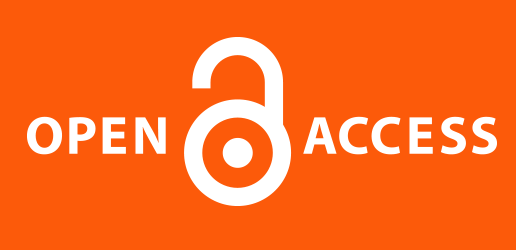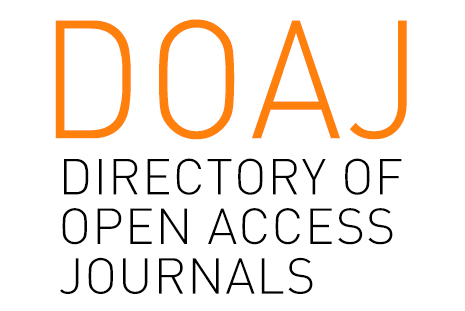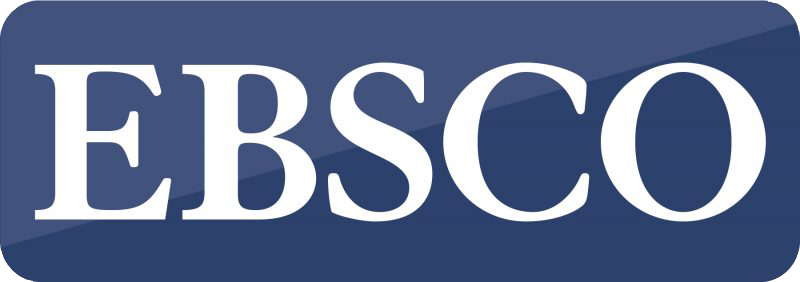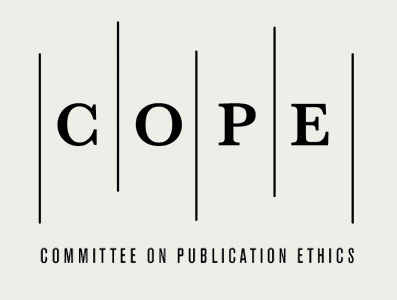Enhancing Talent Acquisition through Lifelong Learning: A Case Study
Tatjana P. Jovanović, Faculty of Engineering Management, Belgrade, Serbia, email: tatjana.jovanovic1@yahoo.com;
Nevena D. Krasulja, Faculty of Engineering Management, Belgrade, Serbia
Иновације у настави, XXXVIII, 2025/1, стр. 106–118
| PDF | | Extended summary PDF |
DOI: 10.5937/inovacije2501106J
Summary: The aim of this paper is to explore how the principles of lifelong learning can be integrated into the Talent Acquisition (TA) team within the Human Resources (HR) department, ensuring that HR professionals remain informed about the constant technological advancements reshaping the field. Through a case study, the research examines the challenges such as lack of standardization, higher recruitment costs, and inefficiencies in recruitment processes. It outlines strategies implemented to address these issues and improve key performance indicators (KPIs). By conducting a qualitative analysis, the study evaluates initiatives such as the creation of a TA community and the introduction of modular training programs which led to significant gains in efficiency and cost reduction. The key findings highlight the role of innovative educational strategies, such as self-regulated learning and the integration of emerging technologies, in fostering a sustainable and adaptable workforce. The paper concludes with actionable recommendations for organizations seeking to empower their teams, drive innovation, and cultivate a workforce capable of navigating future challenges.
Keywords: Talent Acquisition, lifelong learning, future-ready workforce
Татјана П. Јовановић
Невена Д. Красуља
Факултет за инжењерски менаџмент, Београд, Србија
ЦЕЛОЖИВОТНО УЧЕЊЕ КАО КЉУЧ ЗА ЕФИКАСНУ
АКВИЗИЦИЈУ ТАЛЕНАТА: СТУДИЈА СЛУЧАЈА
Циљ овог истраживања је да проучи/открије интеграцију целоживотног учења у процес аквизиције талената (ТА, енг. talent acquisition) унутар људских ресурса (ЉР, енг.
human resources), фокусирајући се на то како ова интеграција омогућава професионалцима да се прилагоде технолошким и стратешким напрецима. Истраживање наглашава често занемарену потребу за усавршавањем професионалаца у ТА, упркос дубоком утицају нових технологија на њихов рад. Значај овог истраживања лежи у адресирању недостатака истраживања о потреби за усавршавањем унутар ТА и ЉР, који су кључни за савладавање изазова који се намећу Индустријом 4.0. Теоријски контекст истиче важност континуираног учења у побољшању резилијентности и прилагодљивости организација. У истраживању је примењен квалитативни приступ коришћењем методологије студије случаја да би се испитао утицај целоживотног учења на процесе ТА. Кључне стратегије укључују стварање сарадничких заједница ТА за унутрашње дељење знања и учење међу колегама, комплементарно модуларном приступу са инструкторима и стратешким коришћењем бесплатних доступних технолошких алата, укључујући вештачком интелигенцијом подржана решења за регрутацију. Ове иницијативе су трошковно ефикасне, користећи постојеће ресурсе и доступне технологије за побољшање процеса ТА без значајног повећања трошкова.
Квалитативна анализа истиче трансформишући утицај самосталног учења, нових технологија и иновативних метода регрутације на праксу ТА. Студија показује како напори за усавршавање координисани кроз Центар изврсности решавају критичне изазове као што су нестандардизована обука и високи трошкови регрутације. Интеграцијом аналитике података усавршена је стратегија запошљавања, побољшавајући доношење одлука и циљане активности за достизање циљева. Ови резултати се слажу са налазима да нова
технолошка решења и развој вештина позитивно утичу на продуктивност и постигнуће на послу.
Нагласак на интерно дељење знања, учење међу колегама и коришћење доступних технологија омогућава тимовима ТА да успоставе самоодрживи оквир за професионални
развој. Овакав приступ ствара културу у којој запослени доприносе идејама, што води до иновативних решења и охрабрује осећај тимске одговорности. Коришћење повратних ин формација кроз фидбек обезбеђује континуирано побољшање на основу података у реалном времену, усавршавајући модуле за обуку да би остали релевантни за еволуирајуће индустријске стандарде. Добровољни и персонализовани карактер обуке омогућава персонализовање учења у складу са искуством појединца, позитивно утичући на способности, мотивацију и продуктивност запослених.
Штавише, предложени оквир за усавршавање тимова ТА је високо прилагодљив и може се применити на различите функције организације изван ЉР, као што су маркетинг,
продаја, операције и ИТ. Интегришући овај холистички приступ преко различитих одељака, организације могу створити кохерентан оквир за континуирано учење и иновације, побољшавајући укупну резилијентност и прилагодљивост организације. Ова мултифункционална примена наглашава потенцијал целоживотног учења да покрене трансформацију организације у целини, стварајући културу континуираног развоја и стратешког раста.
У закључку, ово истраживање истиче стратешки значај усавршавања унутар ТА као кључног фактора који омогућава прилагодљивост организације у ери брзих технолошких промена. Прихватањем континуираног учења и иновативних стратегија за привлачење талената, организације могу оптимизовати процесе регрутације и култивисати будућу радну снагу способну да покрене иновације и раст у пословном окружењу које се стално мења. Овај приступ пружа делотворне информације за стварање скалабилних решења која се слажу са ширим циљевима организације, промовишући одрживи успех у дигиталној ери.
Кључне речи: аквизиција талената, целоживотно учење, радна снага спремна за будућност
References:
- Baykal, E. (2020). Digital era and new methods for employee recruitment. In U. Hacioglu (Ed.). Handbook of research on strategic fit and design in business ecosystems (pp. 412–430). IGI Global Scientific Publishing. https://doi.org/10.4018/978-1-7998-1125-1.ch018
- Black, J. S., & Van Esch, P. (2020). AI-enabled recruiting: What is it and how should a manager use it? Business Horizons, 63(2), 215–226. https://doi.org/10.1016/j.bushor.2019.12.001
- Chamorro-Premuzic, B., Akhtar, R., Winsborough, D., & Sherman, R. A. (2017). The datafication of talent: How technology is advancing the science of human potential. Current Opinion in Behavioral Sciences, 18, 13–16. https://doi.org/10.1016/j.cobeha.2017.04.007
- European Commission (2000). A memorandum on lifelong learning. European Commission. https://www.hsu-hh.de/wb/wp-content/uploads/sites/647/2017/10/Anthology-Memorandum_on_Lifelong_Learning-EU-2000.pdf
- Gajjar, N. T. (2024). Data privacy and protection in the digital age: Emerging trends and technologies. International Journal of Engineering Applied Science and Management, 5(4), 1–4.
- Huang, X., Yang, F., Zheng, J., Feng, C., & Zhang, L. (2023). Personalized human resource management via HR analytics and artificial intelligence: Theory and implications. Asia Pacific Management Review, 8(4), 598–610. https://doi.org/10.1016/j.apmrv.2023.04.004
- Hunkenschroer, A. L., & Luetge, C. (2022). Ethics of AI-enabled recruiting and selection: A review and research agenda. Journal of Business Ethics, 178(4), 977–1007.
- International Labour Organization. Global study on recruitment fees and related costs (2nd ed). https://www. ilo.org/sites/default/files/2024-10/Global_report_master_combinated_web.pdf
- Jarvis, P. (2009). Learning to be a person in society. Springer Science & Business Media.
- Jovanović, T. (2021). Digitalization in talent acquisition. In C. Smilevski (Ed.). Conference proceedings Sixth international science conference Contemporary management challenges and the organizational sciences subject focus digitalization and cyber-security as management challenges (pp. 79–83). BAS Institute of management. https://basim.edu.mk/wp-content/uploads/2022/07/6konfzbornik.pdf
- Jovanović, T., & Arsenijević, O. (2020). Strateška uloga HRM kroz prizmu obučavanja zaposlenih u periodu transformacije poslovanja. Baština, 51, 281–297. https://doi.org/10.5937/bastina30-26539
- Mustafa, B., & Lleshi, S. (2024). The impact of lifelong learning and investments in employee development on employee productivity and performance. Multidisciplinary Reviews, 7(8), 1–8. https://doi.org/10.31893/multirev.2024175
- Ningule, S. S. (2024). Innovating talent acquisition: A comprehensive review of strategies and practices. Annals of the Bhandarkar Oriental Research Institute, 5, 110–130.
- Okatta, C. G., Ajayi, F. A., & Olawale, O. (2024). Enhancing organizational performance through diversity and inclusion initiatives: A meta-analysis. International Journal of Applied Research in Social Sciences, 6(4), 734–758. https://doi.org/10.51594/ijarss.v6i4.1065
- Opada, F. M. M., Ibrahim, M., Irawan, A., Akbar, M. A., & Rasyid, A. (2024). Talent acquisition strategies: A comprehensive examination of recruitment policies for organizational success. Advances in Human Resource Management Research, 2(2), 63–77. https://doi.org/10.60079/ahrmr.v2i2.185
- Purbia, D. (2024). Creating and sustaining a dynamic talent pool: Strategies for achieving organizational excellence. International Journal of Commerce and Management Research, 10(5), 18–20.
- Rahaman, A., & Bari, H. (2024). Predictive analytics for strategic workforce planning: A cross-industry perspective from energy and telecommunications. International Journal of Business Diplomacy and Economy, 3(2), 14–25. https://doi.org/10.2139/ssrn.4983349
- Rehman, S., Ullah, A. Janjua, K. N., Elahi, A. R., & Erum, H. (2024). Talent acquisition and technology: A step towards sustainable development. Frontiers in Psychology, 13, 1–16. https://doi.org/10.3389/fpsyg. 2022.979991
- Rathore, B., Mathur, M., & Solanki, S. (2022). An exploratory study on role of artificial intelligence in overcoming biases to promote diversity and inclusion practices. In S. Balamurugan, S. Pathak, A. Jain, S. Gupta, S. Sharma, & S. Duggal (Eds.). Impact of artificial intelligence on organizational transformation (pp. 147–164). John Wiley & Sons and Scrivener Publishing. https://doi.org/10.1002/9781119710301.ch10
- Skeeled (2020). Predictive hiring: The key to talent acquisition success. Skeeled. https://6513891.fs1.hubspotusercontent-eu1.net/hubfs/6513891/ebook%20PDFs/english/Ebook_Predictive%20Hiring%20the%20Key%20to%20Talent%20Acquisition%20Success.pdf
- Swapna, H. R., & Arpana, D. (2021). Chatbots as a game changer in e-recruitment: An analysis of adaptation of chatbots. In R. Cumar, B. K. Mishra, & P. K. Pattnaik (Eds.). Next Generation of Internet of Things (pp. 61–69). Springer. https://doi.org/10.1007/978-981-16-0666-3_7
- United Nations Educational, Scientific and Cultural Organization (2016). Lifelong learning: Concepts, issues, and actions. https://unesdoc.unesco.org/ark:/48223/pf0000250689
- Van der Togt, J., & Rasmussen, T. (2017). Toward evidence-based HR. Journal of Organizational Effectiveness: People and Performance, 4(2), 127–132.
- Vivek, R. (2023). Enhancing diversity and reducing bias in recruitment through AI: A review of strategies and challenges. Informatics Economics Management, 2(4), 101–118.
https://doi.org/10.47813/2782-5280-2023-2-4-0101-0118 - Wael, A. (2023). The power of artificial intelligence in recruitment: An analytical review of current AIbased recruitment strategies. International Journal of Professional Business Review, 8(6), 1–25. https://doi.org/10.26668/businessreview/2023.v8i6.2089
- Wójcik, P. (2017). Shortage of talents – A challenge for modern organizations. International Journal of Synergy and Research, 6, 123–135. https://doi.org/10.17951/ijsr.2017.0.6.123
Copyright © 2024 by the publisher Faculty of Education, University of Belgrade, SERBIA. This is an open access article distributed under the terms of the Creative Commons Attribution License (CC BY 4.0) (https://creativecommons.org/licenses/by/4.0/), which permits unrestricted use, distribution, and reproduction in any medium, provided the original paper is accurately cited.





